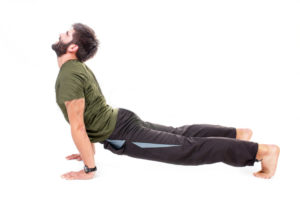 Sciatica is pain that radiates along the path of the sciatic nerve, which is the major nerve that extends from your lower back through your hips, buttocks and down the leg. If there is pressure along the sciatic nerve, it could cause pain, numbness or weakness in your lower extremities. Typically, sciatica affects only one side of your body.
Sciatica is pain that radiates along the path of the sciatic nerve, which is the major nerve that extends from your lower back through your hips, buttocks and down the leg. If there is pressure along the sciatic nerve, it could cause pain, numbness or weakness in your lower extremities. Typically, sciatica affects only one side of your body.
The main causes of sciatica are herniated discs, bone spurs on the spine, or narrowing of the spinal canal (spinal stenosis), and each of these results in compression of the nerve.
The pain associated with sciatica can be severe. Many patients can be treated successfully with non-operative options such as exercise, medications and injections. Patients with severe sciatica that are suffering from significant leg pain and weakness are more likely to be candidates for surgery.
If you are feeling pain associated with sciatica, there are different exercises that can be helpful depending on the cause of the pain, outlined below.
If a herniated disc causes your sciatica pain, then this exercise will help relieve pressure from the sciatic nerve.
Press Up
• Start by laying on your stomach with your elbows positioned underneath your shoulders and your forearms flat on the bed or ground.
• Lift your chest and extend through the spine from your tailbone to the top of your neck, creating an arch in your back.
• Hold for 30 seconds, breathe deeply, and if the pain in your legs lessens, repeat two more times.
• Turn this exercise into an extension by pressing your palms down and lifting your upper body up, keeping your hips and pelvis rooted to the bed or ground. Extend through the spine from your tailbone to your neck, allowing your back to arch.
• Stop lifting your chest if you feel any pressure in your lower back.
If disk degeneration and spinal stenosis is causing you pain, then these exercises will help create space between your vertebrae and help them to be less likely to pinch your sciatic nerve.
Knees to Chest
• Lie on your back and hug your knees to your chest. This should allow your lower back to round.
• Hold for 30 seconds and if the stretch lessens the pain in your legs, repeat three times.
Posterior Pelvic Tilt
• Lie on your back/face up, with your knees bent and feet flat.
• Draw your abdominals down to flatten your lower back to the bed or ground.
• Hold for 5 seconds, return to starting position and repeat.
If tight hip muscles are causing you back pain, this stretch will help loosen the hip muscles that may be pressing on the sciatic nerve.
Knee to Opposite Shoulder
• Lie on your back with your legs extended and flex your feet.
• Lift your right leg and clasp your hands behind the knee.
• Gently pull your right knee across your body towards your left shoulder.
• Hold this position for 30 seconds, switch your legs, and repeat.
Seated Hip Stretch
• While in a seated position, cross your right leg over your straightened left leg.
• Hug your right knee with your left arm, making sure your back is kept straight.
• Hold this stretch for 30 seconds to 1 minute and repeat on the opposite side.
If you’ve been feeling pain in your back or spine, contact our office for a consultation.
